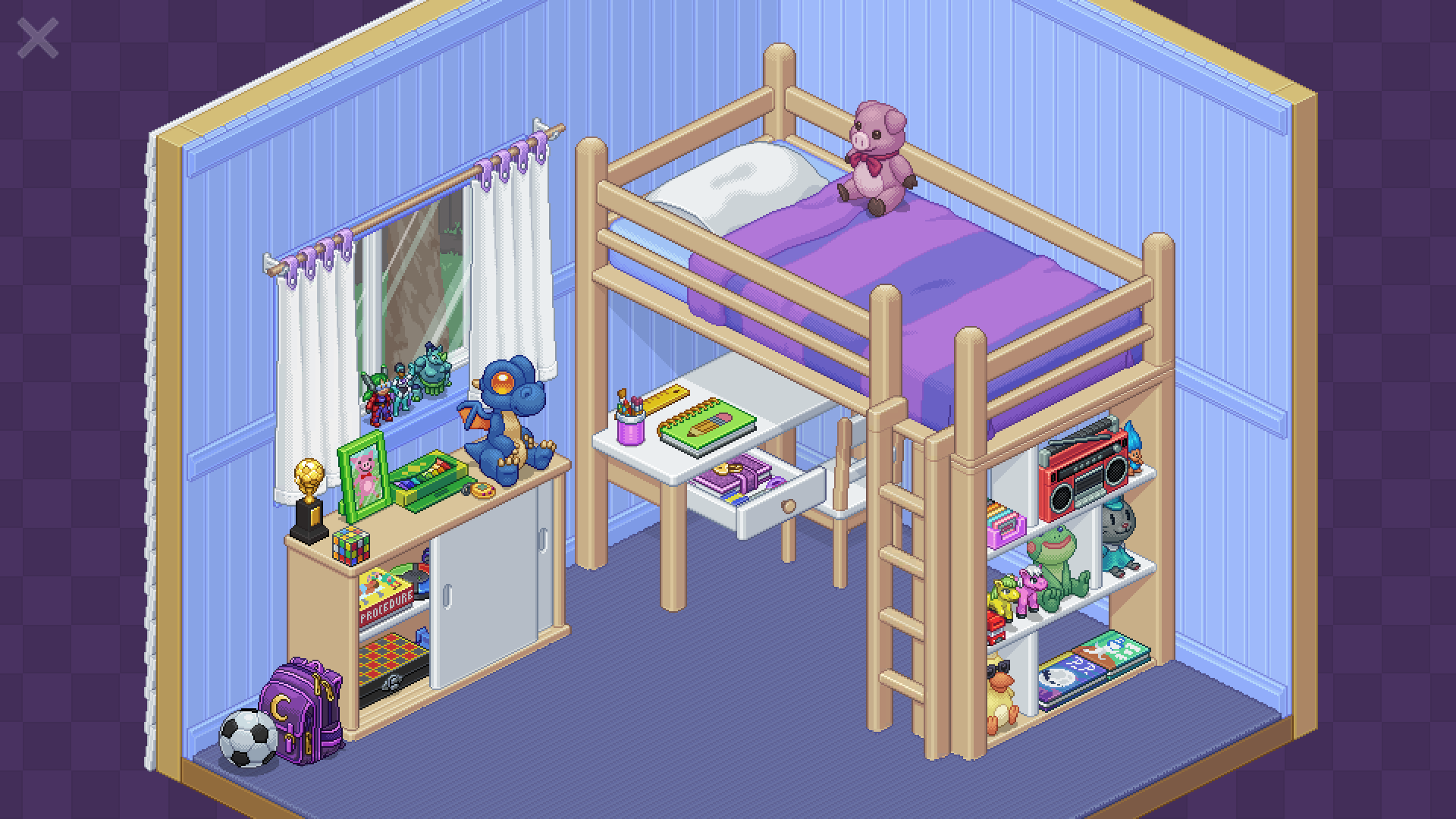
In Unpacking, you’re presented with a series of rooms, each containing a pile of boxes to unpack. The clue’s very much in the name, it seems. An early demo version developer Witch Beam has been showing off features a child’s bedroom and a kitchen, and as you unpack each box, you need to decide on logical placement for each object. You can rotate objects, place some items on top of others, stash them away in drawers – eventually, by the time your boxes are unpacked, just about every viable spot in the room will be filled. Once you’ve unpacked all your boxes, anything placed improperly will glow red until you find a proper place for it: in the kitchen, for instance, you’ll want to put the rice cooker in an alcove, not on the draining board. There are no high scores, no timers, no side objectives – you can take your time and get the room looking exactly how you want it.
Unpacking’s creators, Wren Brier and Tim Dawson, were inspired by a real-life move. “It was when I moved in with Wren, actually,” Dawson says. “The packing process was kind of complicated because I’d been living at my previous place for five years, so I had loads of crap built up. But we did a big cull before we moved. When we got to this place, we had a nice set of curated boxes that contained possessions I really wanted. We had this pile of boxes that contained stuff I not only owned but liked.” The pair hadn’t labelled the boxes, so the contents of each one was a surprise as they opened them, which led to exciting discoveries on each opening. “As we were putting it all away, it felt kind of game-like,” Dawson recalls. “So we were talking a lot about hypothetical games.” Brier remembers suggesting the idea of an unpacking game “kind of as a joke,” but the concept gained traction between the two. “We were looking for something to work on together as a side project while we pursued our actual jobs,” Brier says, “but this one kind of took off and became our actual jobs.”

This game might inspire you to clean your own kitchen afterwards – it’s nice to be neat.
Unpacking is a Zen experience, and a celebration of tidiness and rediscovering your possessions. The complete absence of a scoring system strengthens the game’s sense of purpose – it’s about appreciating the act it depicts, rather than mastering it. “I never thought about a score system”, Brier says. “It just didn’t occur to me to think about. It was always about the joy of unboxing things.” Dawson says that, while he briefly considered potential metrics to “evaluate” the player like a scoring system or a timer, ultimately it didn’t make sense for Unpacking. “It’s that kind of thing where you assume ‘Oh, at some point we’ll add a score system’, but it never fitted very well,” he says. He describes the actual act of playing the game as being “like popping bubble wrap.”
Instead of score-chasing, Unpacking focuses on telling a story. While originally it was going to be about unpacking possessions belonging to a variety of folks, the pair eventually decided that it would be more engaging to follow a single person’s life from childhood onwards, unpacking rooms within each of their homes as they grow up and move. “The idea is that we’re trying to follow each of the moves,” Dawson says. “You only see the unpack, but from that, you can connect the dots and imagine what happened in-between homes.” Where some items can and can’t go will be part of the storytelling process, too. In the child’s bedroom, for instance, you can’t leave the diary lying out – it needs to be hidden, which tells us that the character wants to keep it a secret. Dawson describes this as a “stealth storyline,” where you’ll be able to absorb the life of the person you’re unpacking for without necessarily realising that you’re being told a story.

You can’t just leave your toys scattered around the ground – don’t try to argue that you’re busy playing with them.
There are two guiding principles to the process of unpacking in the game: every object must have at least two spaces in the room where it can go, and every item must be put ‘away’. This means that you can’t leave objects scattered on the floor, for instance, but there’s scope to personalise the experience depending on your own sense of how the room and the objects within it should fit together. “Initially, when we made our first rooms, I just went by what I do, and how I like to organise a kitchen,” Brier says. “And that was not exactly how other people organise their kitchens, and people would get upset that they couldn’t put things where they wanted. We realised we had to relax the rules and give people more options. We learned a lot from playtesting.”
When Dawson and Brier show their game at conventions, the most frequent comment they get from players is that it feels like the game was made specifically for them. “They always understand immediately what to do,” Brier says. “It’s so clear when you’re presented with a room with some boxes in it that what you’re meant to do is unpack them. This has been clear to people from kids seven years old and up. Anyone and everyone can understand what to do in the game.” Unpacking is intentionally an uncomplicated, easy experience, and it’s shaping up to be extremely satisfying.
Genre: Tidy-’em-up
Format: PC
Developer: Witch Beam
Publisher: Witch Beam
Release: Late 2020





